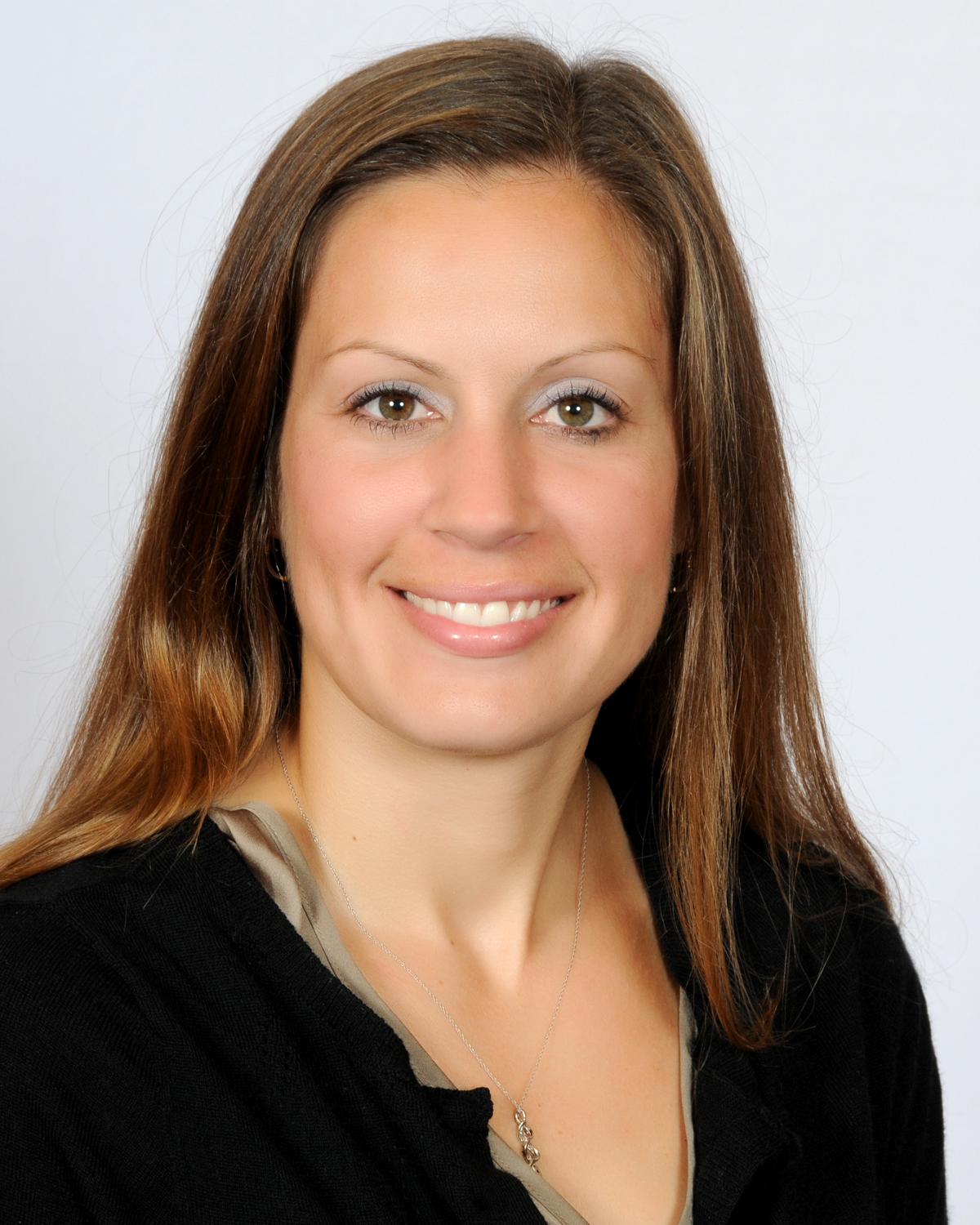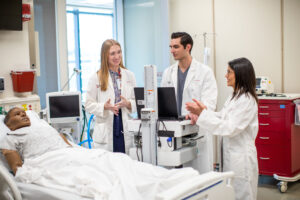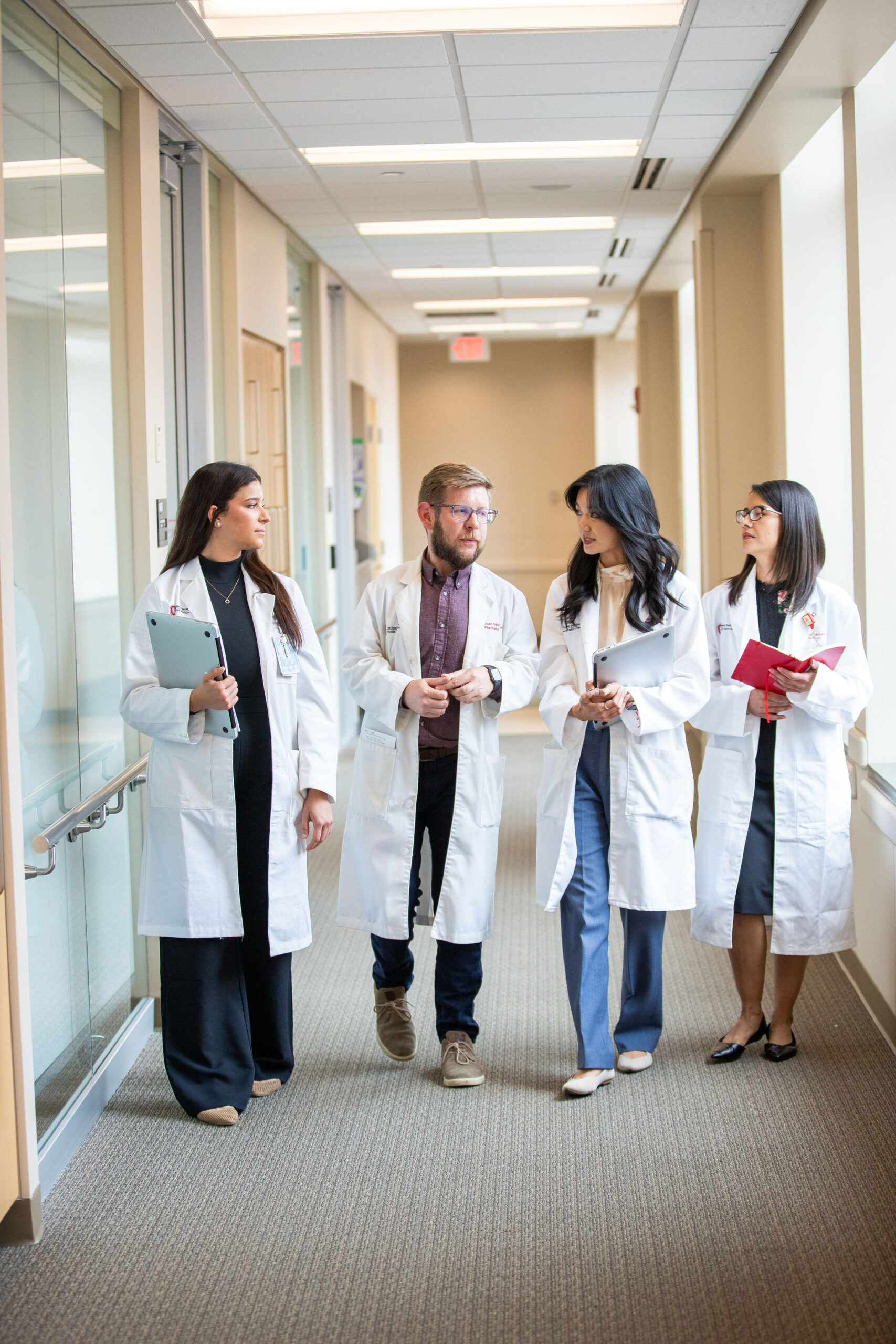pgy2 program
Residency Program Director
-

Erin Reichert, PharmD, BCPS
- PGY2 Emergency Medicine Residency Program Director The Ohio State University Wexner Medical Center
- Emergency Medicine Specialist
Previous Year Residents
-
Alaina Feltes, PharmD
Emergency Medicine Pharmacy Specialist - Nationwide Children's Hospital -
Paul VanEmmerik, PharmD
Emergency Medicine Pharmacy Specialist - Providence Portland Medical Center -
Robert Brenneman, PharmD
Clinical Pharmacy Specialist, ICU/Emergency Medicine, Grant Hospital -
Matthew Poremba, PharmD
Clinical Pharmacy Specialist, Emergency Medicine, University of Maryland, Baltimore -
Joe Plott
Clinical Pharmacy Specialist, Emergency Medicine, University Hospital, Newark, New Jersey -
Ashley Weiner
Clinical Pharmacy Specialist, Emergency Medicine, The Ohio State Wexner Medical Center -
Asia Rujevcan
Emergency Medicine Clinical Pharmacist, University of Chicago Medical Center -
Caroline Vizzi
Emergency Medicine Clinical Pharmacist, New York-Presbyterian Hospital -
Lauren Beauchamp
Emergency Medicine Clinical Pharmacist, Franciscan Health, Indianapolis, IN -
Samantha Wagner
Critical Care Clinical Pharmacist, Emergency Medicine/Critical Care, Denver Health, Denver, CO -
Elena Ko
Emergency Medicine Clinical Specialist, Carolina Medical Center, Charlotte, NC -
Katie Weigartz
Emergency Medicine Clinical Pharmacist, Baylor University Medical Center, PGY1 Program Director, Dallas, TX -
Kelsey Billups
ED Clinical Pharmacist, Medical University of South Carolina -
Suhair Shawar
Emergency Department Clinical Pharmacy Specialist, The Ohio State University Wexner Medical Center
About the PGY2 Emergency Medicine Residency Program
Residency Sites
As one of America’s top ranked academic medical centers, the mission of The Ohio State University Wexner Medical Center (OSUWMC) is to impro ve people’s lives through innovation in research, education, and patient care. OSUWMC is a 1,506 bed multi-hospital delivery system recognized in 2022 as one of “America’s Best Hospitals” for excellence in nine specialties by US News and World Report based on quality, outcomes, and reputation.
ve people’s lives through innovation in research, education, and patient care. OSUWMC is a 1,506 bed multi-hospital delivery system recognized in 2022 as one of “America’s Best Hospitals” for excellence in nine specialties by US News and World Report based on quality, outcomes, and reputation.
The Abercrombie and Fitch Emergency Department
The Abercrombie and Fitch Emergency Department (ED) at The OSUWMC is a designated Level 1 Trauma Center, as well as a Comprehensive Stroke, Burn, and Hyperbaric Oxygen Treatment Center and Cardiac Center with more than 80,000 visits annually. The ED space includes over 109 beds: nine Level 1 Trauma-Critical Care Resuscitation Rooms, a 20 bed observation Unit, a 15 bed hematology/oncology pod, and an Arrival Zone for minor illness or injury treatment. The Department of Emergency Medicine provides medical staff for this unit, which includes 60 staff physicians and 48 Emergency Medicine (EM) residents. The pharmacist-physician relationship is synergistic and collaborative. The medical team consists of EM staff physicians and residents, advanced practice providers, guest residents from services such as internal medicine, anesthesia, and orthopedics, medical students, EM nurses and nursing students, social workers and their students, clinical case managers, respiratory therapists, psychiatrists.
Key rotations/experiences
Required Core Rotations:
- Orientation
- Introduction to Triage in Emergency Medicine (4 weeks)
- Intermediate Triage in Emergency Medicine (4 weeks)
- Advanced Triage in Emergency Medicine (4-5 weeks)
- Observation (2 weeks)
- Psychiatry (2 weeks)
- Hematology/Oncology in Emergency Medicine (3 weeks)
- Emergency Medicine IPPE Clinical Precepting (2 weeks)
- Advanced Emergency Medicine (4-5 weeks)
- Pediatrics at Nationwide Children’s Hospital (4 weeks)
Required Longitudinal Rotations:
- Clinical and Operational Staffing
- Journal Club
- Quality and Medication Safety
- Research
- Teaching
Elective Learning Experiences Include (but are not limited to):
- Addiction Medicine (2 weeks)
- Surgical ICU (3 weeks)
- Medical ICU (3 weeks)
- Cardiology (3 weeks)
- Neuro ICU (2 weeks)
- Nocturnal Emergency Medicine (2 weeks)
- Central Ohio Poison Control (2 weeks)
- Community Emergency Medicine at OSU East Hospital (2 weeks)
- Emergency Medicine Clinical Precepting (4 weeks)
- Emergency Medicine – Emergency Preparedness (2 weeks)
The program is designed to develop the resident’s clinical expertise in emergency medicine and provide the necessary skills in teaching, quality improvement, and management of medical emergencies. To improve research abilities, the resident will interact with clinicians with research experience and participate in the Pharmacy Research Series. The PGY2 Emergency Medicine Resident will be expected to design, implement, and prepare a manuscript suitable for publication for their chosen research project. Additional opportunities for research and publication are available if the resident desires.
Other key experiences during the residency will include completion of longitudinal medication safety and quality which includes active reporting and follow up of medication events and 2 quality projects and teaching which includes precepting both IPPE and APPE students from The Ohio State University College of Pharmacy, recorded lecture for Advanced Training in Emergency Medicine medical students at The Ohio State University College of Medicine. Other opportunities for teaching include nursing and physician education in the Department of Emergency Medicine or pre-hospital. Other longitudinal rotations include journal club and operational and clinical staffing weekends throughout the residency year.
The resident will also have the opportunity to attend the ASHP Midyear Clinical Meeting, a second professional meeting, and other local or regional educational seminars/conferences as applicable. The program is flexible and will be designed to meet the needs and goals of the individual.
Key Preceptors
Kelsey Champa, PharmD, BCEMP
Emergency Medicine
Andrew North, MBA, PharmD, BCPS, BCCCP, BCEMP
Emergency Medicine
Erin Reichert, PharmD, BCPS
Emergency Medicine
Elizabeth Rozycki, PharmD, BCPS, BCEMP
Emergency Medicine
Kyle Schuchter, PharmD
Emergency Medicine
Suhair Shawar, PharmD, BCPS
Emergency Medicine
Kimberly Jones, PharmD, BCPS, BCPPS
Nationwide Children’s Hospital
Emergency Medicine
Emilija Stojova, PharmD, BCPS
Emergency Medicine
Ashley Weiner, PharmD
Emergency Medicine
Selected Resident research
- An analysis of the relationship between 4-factor prothrombin complex concentrate dose and INR reduction – Plott, J, Reichert E, Emerson G, Li J, North A
- Comparison of 4-factor prothrombin complex concentrate in obese versus non-obese patients for emergent warfarin reversal – Weiner A, Reichert E, Bischof J, Li J, North A
- Thromboembolic complications after 4-factor prothrombin complex concentrate in oncology patients – Rujevcan A, Gopal M, Giglio P, Kaide C, Stojova, E, Li J, Reichert E
- The utilization of a nasal methicillin-resistant Staphylococcus aureus polymerase chain reaction assay performed in the emergency department – Vizzi C, Reichert E, Caterino J, Li J, Rozycki E
- Fluid resuscitation in septic patients with heart failure and reduced ejection fraction – Beauchamp L, Adkins E, Li J, Rozycki E
- Thromboembolic complications between 3F-PCC and 4F-PCC for warfarin reversal – Wagner S, Kaide C, Li J, Reichert E
- Safety of intramuscular ketamine for acute agitation in the ED – Weigartz K, Lester N, Li J, Reichert E
- Impact of paralytic agent on time to post-intubation sedation in the pre-hospital setting
- Beta-lactam versus aminoglycoside-based antibiotic prophylaxis therapy for type III open fractures – Shawar S, Ly T, Shirk MB, Li J, Reichert E
Benefits and Additional Requirements
Application Deadline: January 2
We welcome applications from non-U.S. citizens who have a “green card” (permanent resident status) or a current visa valid through the entire duration of the residency program. The Ohio State University pharmacy residency programs are NOT able to sponsor visas for pharmacy residents (PGY1 or PGY2).
Start Date: July 1
Annual Salary – $54,000
Vacation Days –10 days
Staffing Requirement – 20 weekends per year
Completion of a Major Research Project




You must be logged in to post a comment.